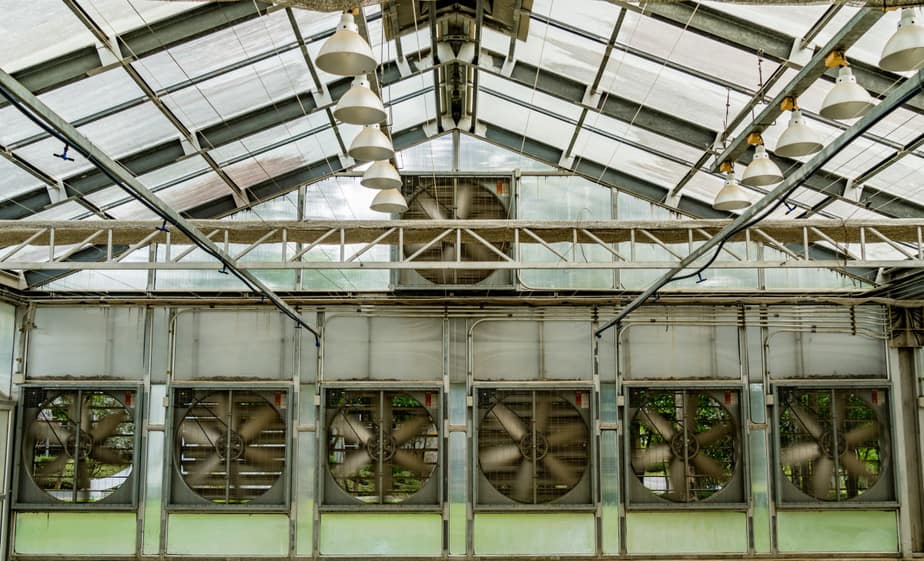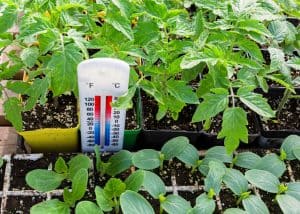Greenhouses allow gardeners to create a controlled environment optimal for plant growth. By better controlling exposure to sunlight, temperature, and humidity the growing season can be extended, but not indefinitely.
Unfortunately, a lot of gardeners are forced to put away their trowel and gloves during winter as extreme cold makes even gardening in a greenhouse impossible.
The good news is, you can solve this issue by setting up a heating system for your greenhouse. Contrary to popular belief, your greenhouse heating and ventilation system doesn’t have to be that expensive.
In this article, we’ll be discussing all the different ways for how to heat a greenhouse as well as the necessary methods of ventilation. Let’s get started!
Why Heat a Greenhouse?
Heating your greenhouse is essential to protect any tender plants you want to grow from the cold temperatures of the winter weather. Otherwise, you’ll have nothing to do but watch them die.
What Makes a Good Greenhouse Heating System?
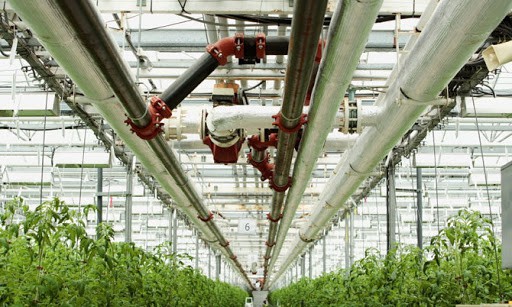
A reliable heating system is very important for anyone planning to maintain successful plant production. We consider a heating system “good” if it can provide consistent temperature control without releasing harmful materials to the plants.
As such, suitable energy sources for heating systems in a greenhouse include natural gas, LP gas, wood, fuel oil, and electricity. The availability and cost of these sources will somewhat vary according to where you live.
You need to also consider factors such as convenience, investment, and operating costs when evaluating a heating system for your greenhouse. For example, saving some money on labor can allow you to buy a more expensive heating system with automatic controls.
The heater requirements for a greenhouse depend on the amount of heat loss from the structure, which typically occurs via the three types of heat transfer: conduction, convection, and radiation. These types of heat exchange usually happen at the same time, and the heat demand for a greenhouse is calculated by combining all three losses as a coefficient in a heat loss equation.
Want to learn more about the best options on the market? This guide to greenhouse heaters has a number of options worth considering ranging from hobby-sized to commercial!
How to Heat a Greenhouse
Now, let’s take a look at the different ways you can heat a greenhouse:
1. Direct Solar Energy
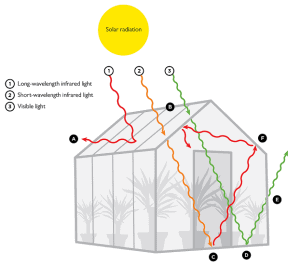
If you’re getting ready to install a heating system in your greenhouse, it’s best to start with the free resources you can use. Then, once you’ve taken advantage of all the sustainable ways to keep warm air in your greenhouse, you can proceed to buy ones that’ll provide a greater performance if necessary.
So first, let’s talk about the heat source that keeps the whole planet warm – the sun. Obviously, using direct sunlight is the easiest and cheapest way you can heat a greenhouse.
You can keep your greenhouse warm by placing it in a position where its north wall is against the south side of your home.
Not only will this let the greenhouse form a south-facing extension of your home, but it’ll also create a heat sink (simply something that absorbs heat when it’s available and then slowly releases it over time) for your home to help you lower your heating bills.
2. The Sun as a Passive Heat Source
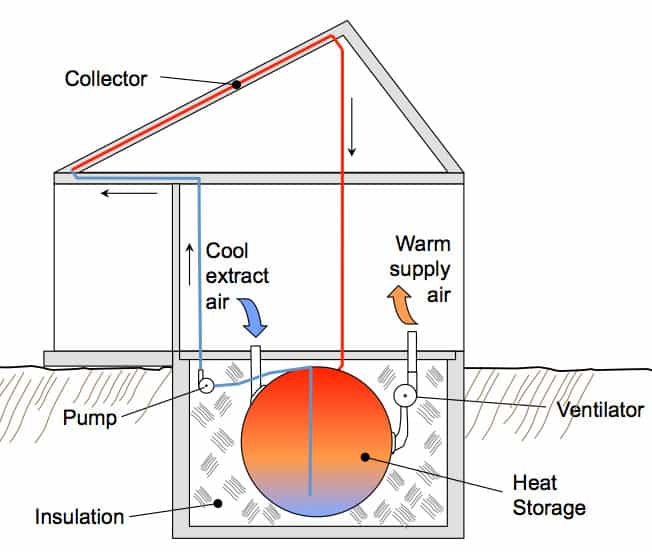
As we mentioned above, solar energy (direct from the sun passing through the walls) is the first, cheapest, and most important heat source you should consider using for a greenhouse. The electromagnetic radiation of the sun rays will warm all items inside the greenhouse, which is the idea behind holding onto this heat to use it as a passive source later on.
Interested in more passive energy collection. Consider going full solar in your greenhouse!
After you’ve positioned your greenhouse to capture all the free sunlight (when available), your next step should be coming up with sustainable ways of storing the heat you’ve gathered. Here’s a couple of suggestion you can try:
- Put a thermal mass inside the greenhouse – a thermal mass is a large object that can absorb and hold a great amount of heat. Many gardeners use large 55-gallon barrels filled with water as a thermal mass to help prevent abrupt temperature drops after sunset.
- Insulate the walls of the greenhouse – another way to capture as much warm air as possible inside your greenhouse during a cold winter is by insulating its walls. You can use bubble wrap to insulate the transparent walls of your greenhouse. If you have some of this common, inexpensive material around your house from mail-order parcels and deliveries, it’ll work perfectly for greenhouse insulation.
- Build the north wall of the greenhouse out of insulating materials – the north wall of a greenhouse isn’t usually exposed to direct sunlight. Using a good insulating material to build it, such as cinder blocks, will allow it to absorb warmth from the hot air inside the greenhouse during the day and then slowly release it throughout the night. Confused? Learn more about where to build and orientate your greenhouse.
3. Compost
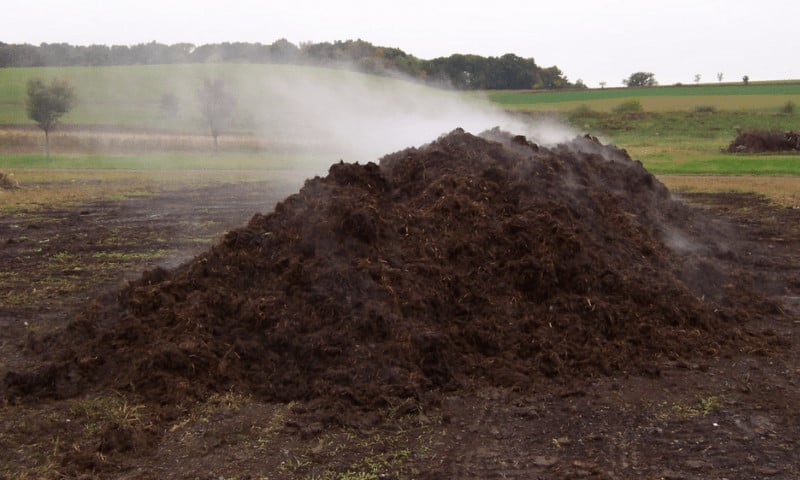
In addition to providing you with fertilizer made from waste products, adding a compost pile inside your greenhouse can also serve as a source of heat.
Compost piles can generate a lot of warmth, particularly those containing some sort of manure, from horses or other farm animals. According to Oregon State University’s Gardening Newspaper, a hot compost pile can reach a temperature up to 150 degrees Fahrenheit.
4. An Electric Heater
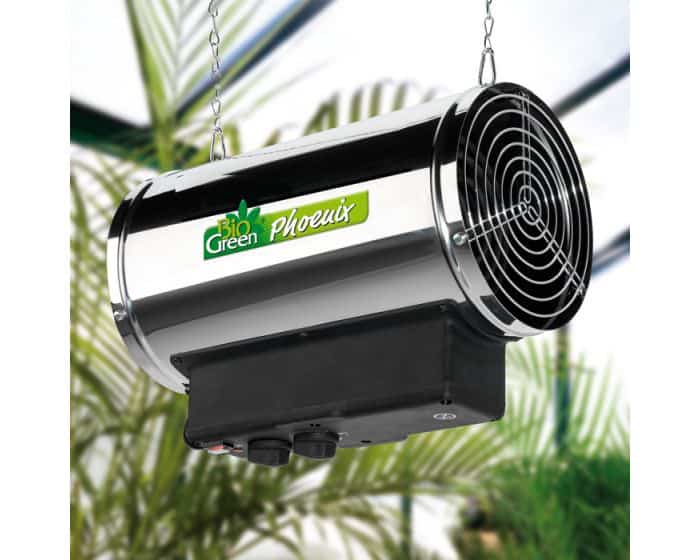
Now that we’ve covered the free stuff, let’s talk about more costly options like an electric heater.
Yes, it’ll cost you some money to keep your greenhouse warm via an electric heater, but not necessarily a fortune if the system is equipped with a thermostat and/or an automatic timer. Such features may run the heater only for a few hours during cold nights when warmth is most needed.
This type of heating system is quite simple to operate, making it also convenient for gardeners who are often away during workdays. You’ll be able to simply set the thermostat on your heater and get going, knowing that it’ll turn on only when required.
What’s more, modern electric heaters are equipped with reliable safety features such as automatic shut-off functions that shut down the operation if the unit tips over or becomes too hot.
5. Gas Heaters
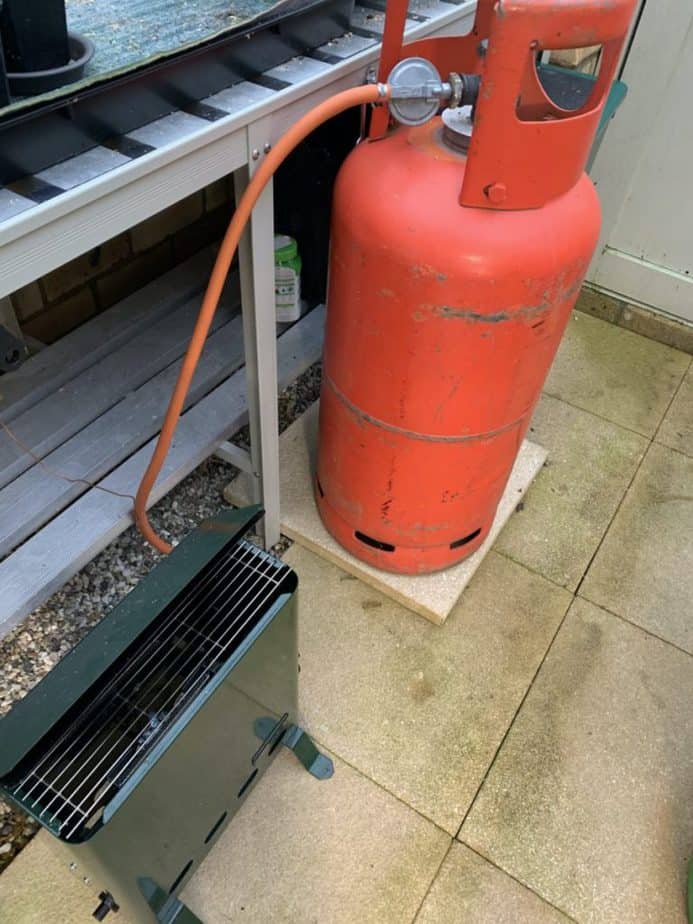
From here on, the heating systems we’ll be talking about are ones that generate heat by burning through some kind of fuel. First up, we have gas heaters.
Unless your greenhouse is integrated with your house’s infrastructure, you probably don’t have access to natural gas supply from your utility company. In this case, you can purchase propane tanks and connect them to a propane heater placed inside your greenhouse.
It’s important to consider the safe venting of propane to expel gases while also bringing in an adequate supply of oxygen for the gas to burn properly.
6. Kerosene or Paraffin Heaters
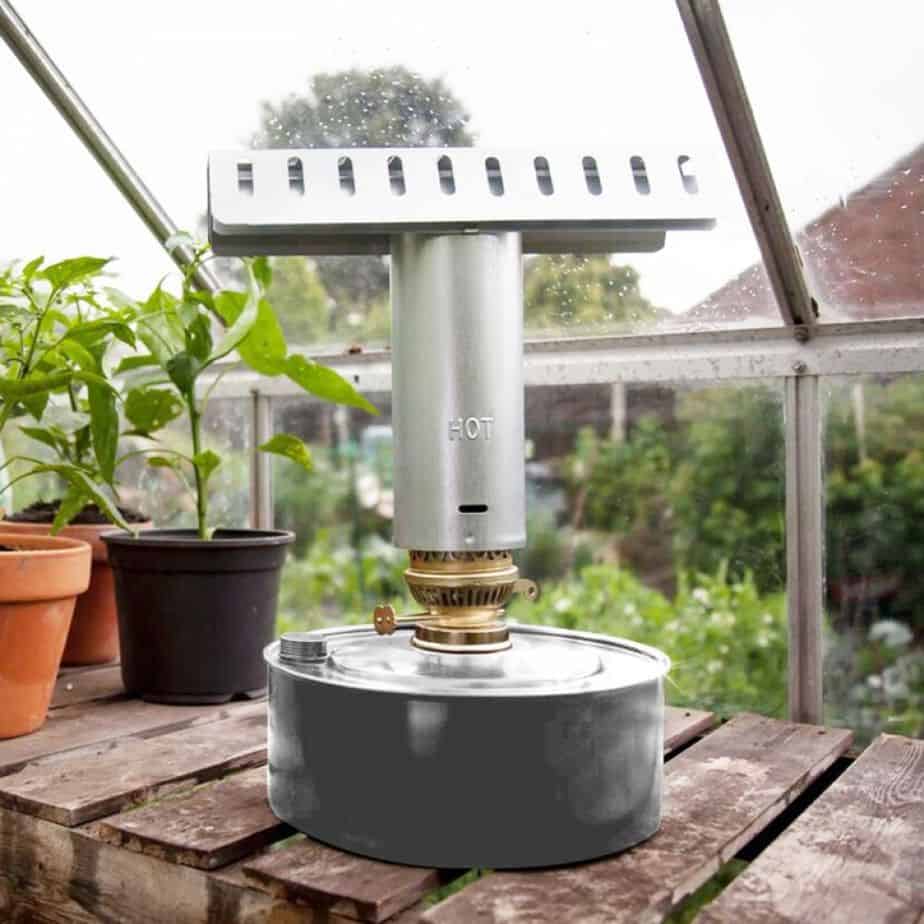
Kerosene or paraffin heaters work by lighting a wick that draws liquid fuel up from a storage compartment. Typically, such systems include a form of safety feature to extinguish them in the event of falling over.
Still, these pose a fire and environmental risk because they release air pollutants such as carbon monoxide, nitrogen oxides, sulfur dioxide, as well as polycyclic aromatic hydrocarbons and phthalates. Consequently, you’ll need to operate them in a place with adequate airflow.
7. Wood Stoves
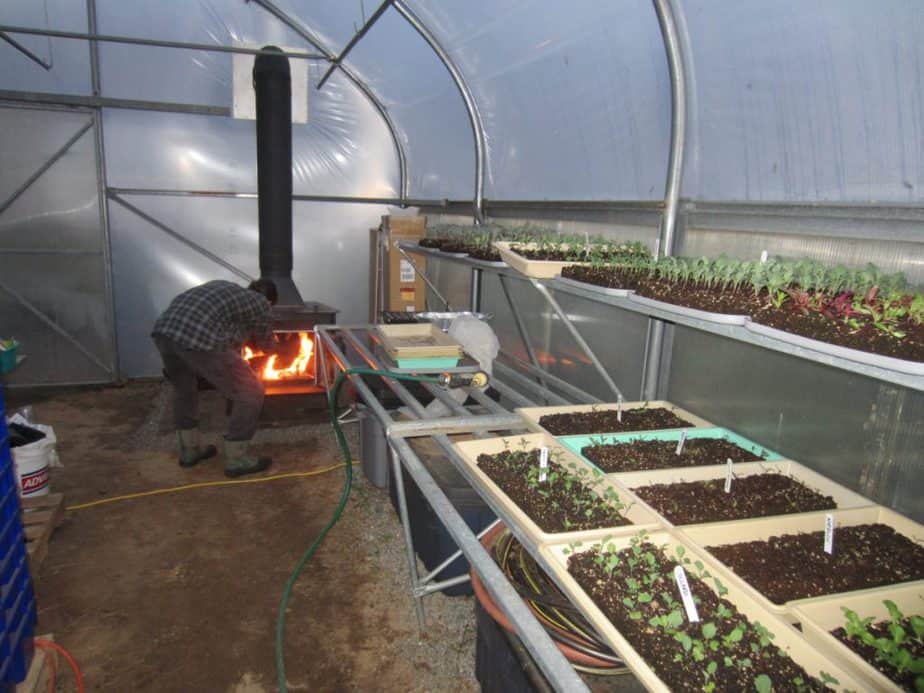
If you’re on the fence about relying on fossil fuels to heat your greenhouse, you should consider wood stoves as an alternative option for greenhouse heating.
This can be a sustainable method to deliver occasional heat to your house as long as you have access to firewood. However, wood stoves aren’t the best heat source for a greenhouse if you live somewhere with especially cold winters as they’re very labor-intensive.
Not only do you need to obtain and transport firewood, but you also need to check on the fire every hour or so to maintain its burning. Additionally, you should ensure that the location where the chimney passes through the structure of your greenhouse is well insulated.
8. Rocket Mass Heaters
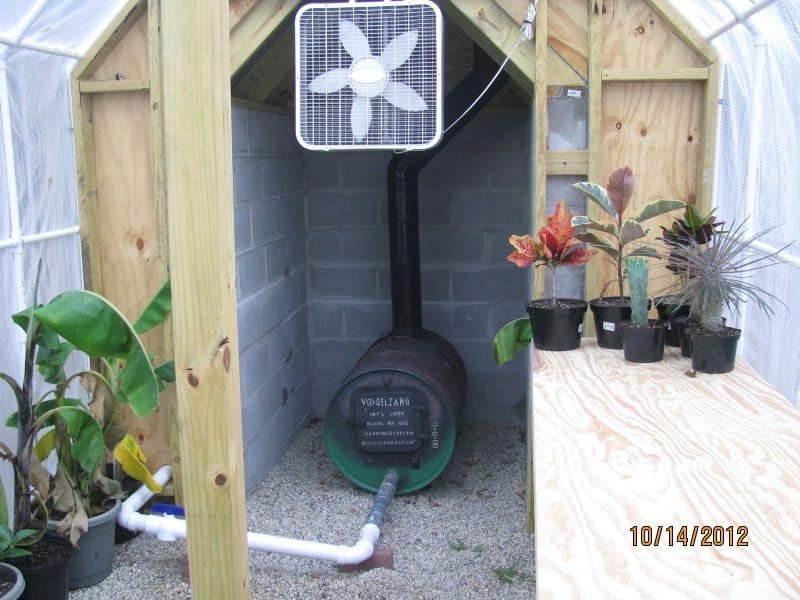
Rocket mass heaters are built as part of the original structure of the house. They feature a high-temperature combustion chamber where wood gets burned.
They also involve a large brick or masonry mass through which the combustion gases are channeled, effectively heating up the entire thermal mass to radiate warmth outwards for many hours.
Why Ventilate a Greenhouse?
Ventilation is a crucial factor for a successful greenhouse. You can benefit from a reliable ventilation system in the following areas:
Temperature
Good ventilation prevents your greenhouse from getting too warm. It’s necessary even in relatively cool weather.
You may not know this, but more plants are likely to die from excess heat rather than from the low temperatures inside a greenhouse. A lot of common plants are sensitive to heat and will either stop growing, wilt, or die in such conditions.
Installing vents across your greenhouse can help keep the temperature inside your greenhouse correct and consistent by allowing some of the heat to naturally escape.
Fresh Air
Plants require carbon dioxide for photosynthesis. As a result, if your greenhouse doesn’t receive adequate airflow, the plants inside won’t grow as properly.
Installing vents allows fresh air to uniformly enter your greenhouse. But keep in mind that you also need to use some sort of greenhouse fan to make sure that the fresh air reaches all of your plants.
Pests
Ventilation affects pests inside greenhouses, but not many people know that. Poor ventilation can cause plants to develop diseases and become vulnerable to opportunistic insects.
Additionally, inadequate air circulation can make your greenhouse an overly comfortable place for pests. Installing fans near bug-infested plants, such as whiteflies, can drive the insects away from your greenhouse.
Pollination
In nature, wind supports the phenomenon of pollination. Since greenhouses don’t naturally have this wind, you should provide fans.
The introduced air will gently move the plants, allowing pollination to take place. Such action is very important when dealing with seld-pollinating plants such as tomatoes.
How to Ventilate a Greenhouse
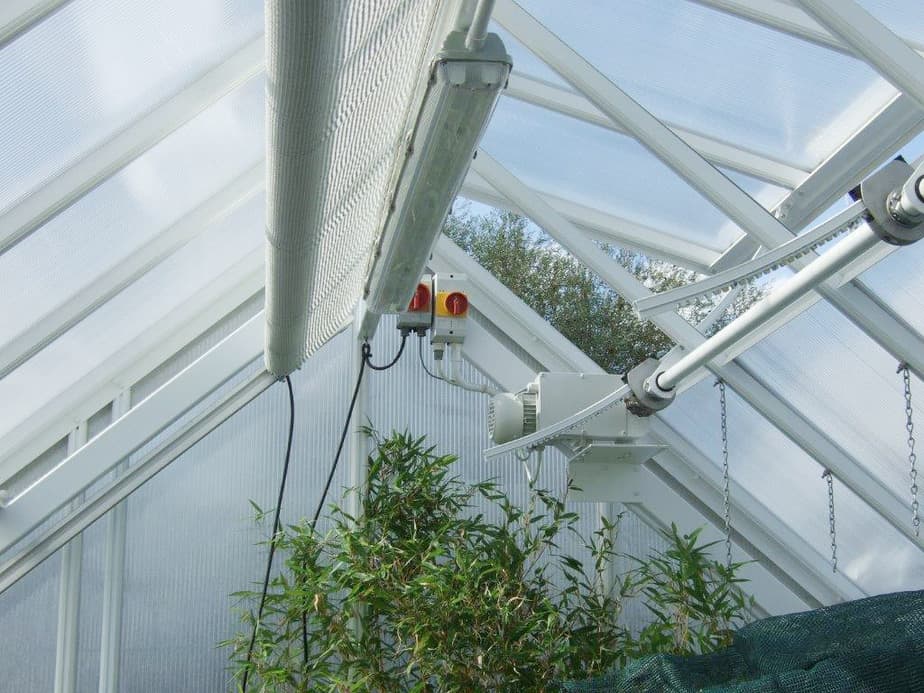
Now, let’s take a look at the different ways you can ventilate a greenhouse:
1. Vents
Passive ventilation utilizes vents or openings that naturally introduce air throughout the greenhouse.
This is the most common method of ventilation in greenhouses among gardeners. It’s available in 2 designs: roof ventilation and side-wall ventilation, the former being more effective.
The capacity of a vent to remove heat from a greenhouse depends on the height of the structure along with the height of the vent. The ‘chimney effect’ phenomenon where hot air rises and cooler air falls is the foundation for passive ventilation, which reaches the highest efficacy at around 3.5 meters high.
As a result, if you own a low-profile greenhouse, you’ll need to install forced cooling to achieve similar conditions to a vented tall structure.
2. Fans
Active ventilation utilizes an apparatus to pull and push air into and out of the structure, namely fans.
Fans are the main equipment for actively venting a greenhouse. You can also use them to circulate air within your greenhouse. In this case, circulating fans are paired with vents (passive ventilation) to promote air movement if venting is poor.
To achieve the most effective air exchange using fans, pulling the air through the full length of the structure to avoid hot air pockets remaining is the way to go.
Additionally, fans installed higher in the greenhouse are more effective in extracting air for cooling than when placed lower.
Active ventilation systems don’t have a great capacity when it comes to the quick exchange of large volumes of air, even less if the design specifications for your greenhouse are inadequate.
Poor air circulation through your greenhouse can cause overheating problems in the crop positioned at the center of the structure. To ensure correct capacity and installation, be sure to choose the proper fans after consulting the manufacturer and an independent expert.
In general, ventilation fans should have enough capacity to fully replace the air in the greenhouse every minute.
Greenhouse Heating – How Are You Going To Do It?
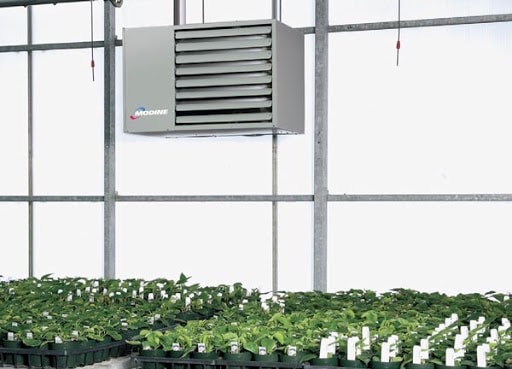
There you have it, everything you need to know about how to heat a greenhouse as well as how to provide proper ventilation.
But, how are you going about tackling your greenhouse heating? While a thermal mass is typically the most recommended greenhouse heating option, let’s discuss all the possibilities in the comments!

